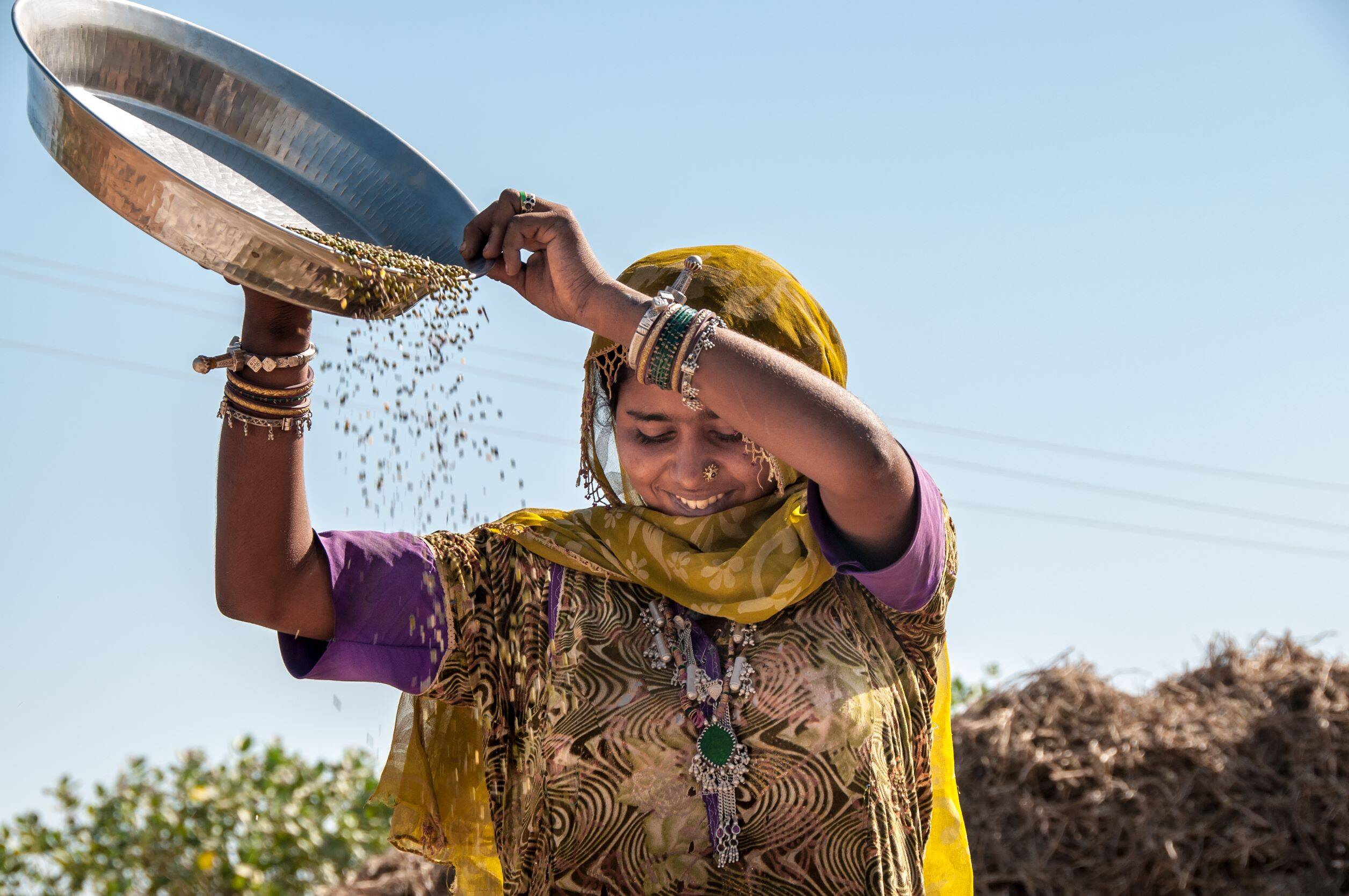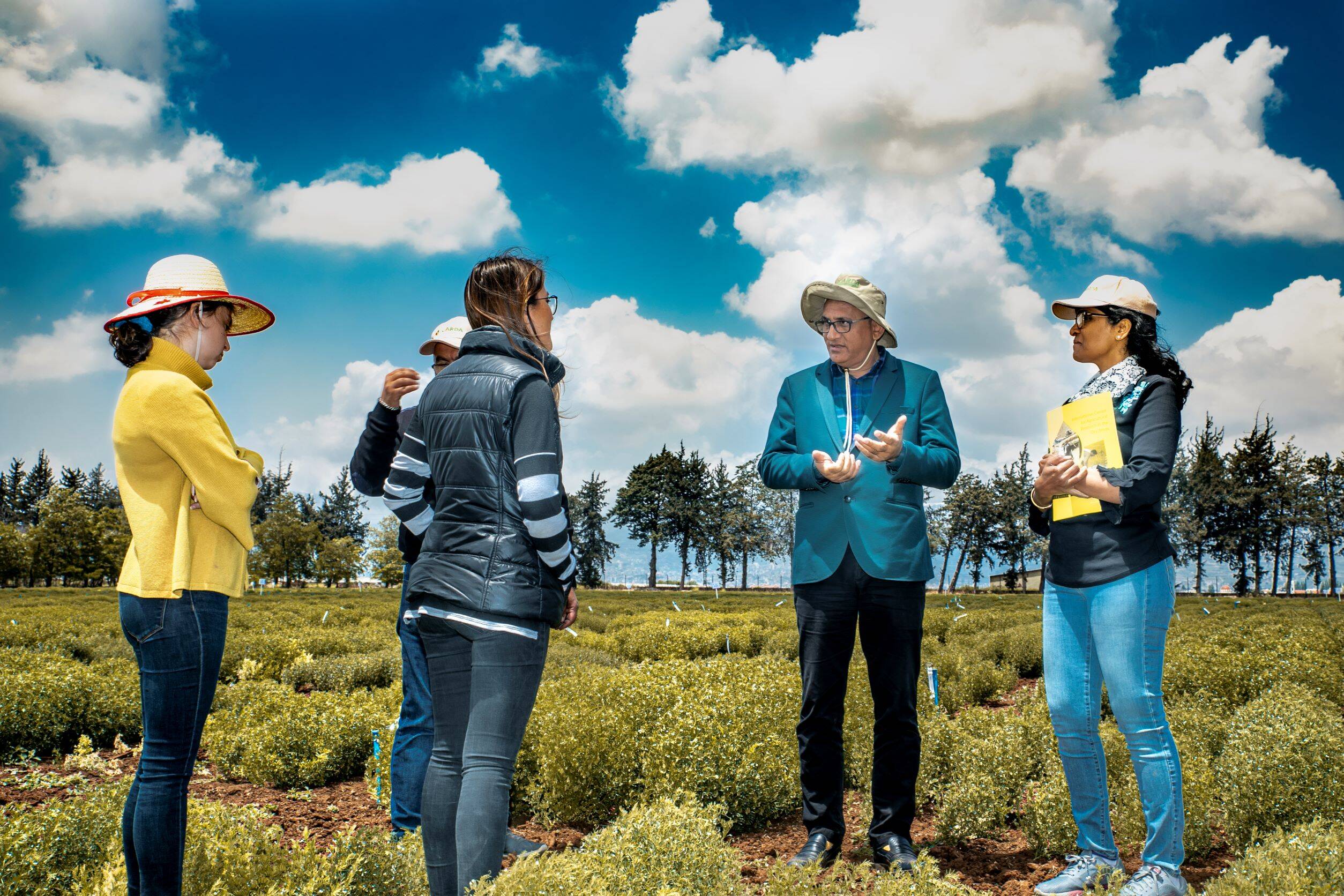A Brief History of the Mighty Lentil in India

ICARDA is grateful to Indian Council for Agricultural Research and the Indian State Governments of Madhya Pradesh and Odisha for supporting ICARDA’s work on Lentils.
----------
Lentil, a crop that ICARDA and its partners have been researching and improving for decades, is a mainstay of India’s food security and economy. On World Pulse day, Shiv Kumar, ICARDA’s Chief lentil breeder, explains the history of this humble, yet vital crop.
By Dr. Shiv Kumar Agrawal, ICARDA's Chief Lentil Breeder
--
Nowhere is the humble lentil more important than in India. Skinned, split, and pureed into the subcontinent’s favorite dish Dal (which means ‘lentil’), this protein-packed legume has been a mainstay of the Indian diet since 2500 BC.
“Rice is good, but lentils are my life,” goes a famous Hindu proverb. As ICARDA’s chief lentil breeder and Food Legumes Program leader based in India, I decided to celebrate World Pulses Day by retracing the history and importance of this seemingly puny, lens-shaped legume since its early domestication.
From the lush plains of the ancient Middle East to its wide adoption in India, all the way to ICARDA's lentil research conducted in partnership with the Indian Institute of Pulses Research (ICAR), lentils have always been an object of fascination.
Available in vibrant shades of red, orange, yellow, green, brown, and black, lentils were among the first plants to be domesticated some 12,000 years ago -along with barley and wheat’s oldest ancestors- in the Fertile Crescent.
This vast area where agriculture and farming first originated covers modern-day Iraq, Syria, Lebanon, Palestine, Israel, Jordan, and Northern Egypt, together with the northern region of Kuwait, the southeastern part of Turkey, and the western portion of Iran.
It is likely that at first, lentils were planted and harvested, and the sturdiest seeds were conserved and replanted by some canny farmers. Because lentils are self-pollinating, cross-breeding with wild cousins did not occur, and 'farmed' lentils were able to improve generation after generation.
Historians believe that the proteins in lentils, chickpea, and peas may have played an even bigger role than animal and dairy proteins in supporting hunter-gatherers to gradually adopt a sedentary lifestyle and establish villages and communities, and farming during the Neolithic Revolution.
Between 5000 and 4000 BC, lentil cultivation moved eastwards to Georgia and finally reached India and Pakistan around 2000 BC. Archaeological evidence shows that Indians have enjoyed lentil-based dishes since the early Harrapan Period, which started around 2800 BC with the establishment of the first urban centers. That’s also when dal made its first appearance, and lentils became a staple food.

Roughly one in every five or six lentils cultivated worldwide grows in India, whose annual production ranges from 1.1 million tons to 1.5 million tons, within the global production of 6.3 million tons a year.
In India, lentil is the second most important Rabi crop after chickpea (meaning that it is sown in winter and harvested in the spring). While cultivated lentils cover roughly 1.5 million hectares of India's arable land, each hectare only produces between 847 and 1000 kilograms of lentils, significantly below the global average of 1260 kilograms/hectare.
Historically, lentils are rainfed in India, and local varieties require ‘normal’ levels of rainfall to give good yields. In the face of worsening climate change, the yields of local varieties have dwindled.
Lentils do not need much water, making them well-suited to arid and marginal lands. For perspective, to reach maturity, one kilogram of lentils requires ten times less water than a kilogram of beef.
Lentils contain between 20-30 percent protein, and if combined with a whole grain, they offer the same quality protein as meat. Lentils are also a lean and rich source of fiber and micronutrients and contain multiple vitamins, specifically iron, zinc, and folate. As obesity, undernutrition, and micronutrient deficiencies continue to escalate worldwide -in part due to agri-food systems favoring beef, sugar, cereal, and oil production over legumes, fruits, and vegetables- pulses have a crucial role to play.
Lentils’ prebiotic carbohydrates – which activate the growth of good bacteria in the colon – have proven and wide-ranging health benefits, including preventing chronic illnesses such as type two diabetes, obesity, and cancer.
Lentils’ prebiotic carbohydrates make it a vital candidate for breeding efforts at the intersection of nutrition and genes – a field called ‘nutrigenomic’- with a view to the prevention or treatment of human disease.

New lentil cultivars developed by ICARDA in partnership with Clemson University could even help combat global health problems while also proving resilient to climate change.
With the help of the Rhizobium bacteria that flourish on their root nodules, lentils (and other legumes) capture atmospheric nitrogen and fix it in the soil, creating natural fertilizer for the next crop. They can embed between 70 and 210 kilograms of nitrogen per hectare, and when integrated into a cereal-based system, have a negative carbon footprint.
ICARDA’s considerable and unique germplasm collections of lentils are of global importance. Rich in landraces and wild relatives – the ancestors of our domesticated crops – these collections are crucial to ensuring continued genetic gains and beating climate change impact through the development of climate-smart crops and approaches.
The tools for change are already in place. But as with so much when it comes to climate change adaptation, it is as much a case of the research as it is changing behavior and approaches, from farmer level up to policies that are favorable to such change. We are delivering the science, and along with our partners, donors, global institutions, and governments, we are making slow but sure progress.
Climate-smart lentils are as good a start as any.
--------------------------------------
Dr. Shiv Kumar Agrawal has just released the book ‘Wild Lentils: Treasure of Novel Diversity’ written with ICARDA and ICAR colleagues.
ICARDA is grateful to Indian Council for Agricultural Research and the Indian State Governments of Madhya Pradesh and Odisha for supporting ICARDA’s work on Lentils.
